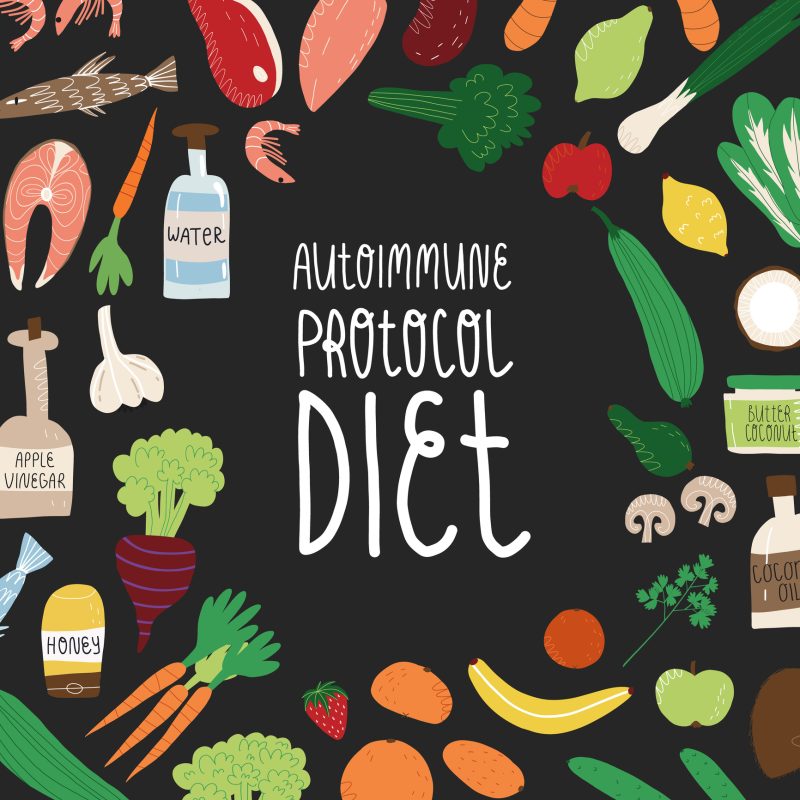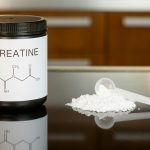
Autoimmune diseases, collectively including type 1 diabetes, rheumatoid arthritis, lupus, and irritable bowel disorder (IBD), can wreak havoc on a body’s digestive system. This can result in a range of symptoms, including joint pain, fatigue, abdominal pain, diarrhea, brain fog, and tissue/nerve damage. Genetic propensity tops the list of factors thought to cause autoimmune diseases, as well as stress, infection, and inflammation. In an effort to combat these symptoms, the introduction of the autoimmune protocol diet (AIP) has met with much success. Here we offer a comprehensive overview of the AIP diet, including the science behind it, as well as what experts currently know about its ability to reduce symptoms of autoimmune disorders.
Autoimmune Disorders and the Human Gut
For individuals living with autoimmune diseases and/or disorders, their immune systems tend to produce antibodies that, rather than fight infections, attack healthy cells and tissues instead. In addition, some research suggests that in susceptible individuals, damage to the gut barrier can lead to increased intestinal permeability, also known as “leaky gut syndrome,” which in turn may trigger the development of certain autoimmune diseases.
Scientists and dietitians alike believe that certain foods can possibly increase the gut’s permeability, thereby fostering the likelihood of developing leaky gut. While experts believe that a leaky gut may serve as a plausible explanation for the inflammation experienced by people with autoimmune disorders, the current research renders it impossible to totally confirm a cause-and-effect relationship between the two.
The Origins of Autoimmune Diseases
While researchers do not yet have a complete picture of what exactly brings about an autoimmune reaction in some individuals but not others, they do agree on several key features. Environmental factors — infections, chemicals, and diet, among others — play a major role in autoimmune diseases; however, little scientific endeavors focus upon food components as the most prevalent modifiers of these afflictions. The primary factor controlling food-related immune reactions lies in what scientists refer to as the oral tolerance mechanism. The failure of oral tolerance triggers immune reactivity against dietary antigens, which may initiate an autoimmune disease when the food antigen shares homology with human tissue antigens. Data from testing on various food protein antigens led to the generally accepted working theory that chemical modification of food proteins by different toxic substances inherent in food may elicit an immune reaction against those modified food proteins that cross-react with human tissue antigens. This results in autoimmune reactivity. On a cellular level, our bodies reflect what our microbiome eats; as such, food can change the gut flora, and toxins can breach the gut barrier, penetrating different organs where they can initiate autoimmune responses.
Understanding the potential link between specific food consumption and autoimmunity in humans laid the groundwork for research into adopting a proper diet for the prevention of autoimmune diseases.
The AIP Diet
Given the fact that in some sensitive individuals, certain foods seem to incite negative gut reactions, the autoimmune protocol (AIP) meal plan seems to have met with a good deal of success. The protocol calls for eliminating certain foods that tend to cause inflammation (usually beginning with gluten and dairy) and, after a period of time, reintroducing them one at a time once symptoms improve. The AIP diet replaces the offending food choices with health-promoting, nutrient-dense foods that have demonstrated an ability to heal the gut. Many people who have followed the AIP diet perceive improvements in overall health, as well as reductions in common symptoms of autoimmune disorders such as fatigue, inflammation, and gut/joint pain.
Phase 1 – Elimination
Elimination diets act in various ways, including the following ~
- restoring the balance of intestinal flora
- modulating immune activation
- reducing overgrowth of proinflammatory bacteria
- promoting nutrient intake and mucosal healing
The first step of this process involves determining which foods and/or medications tend to cause gut inflammation (due to imbalances between levels of good and bad bacteria) or an immune response. Keeping a food journal can help with the process. Later in the article, we will delve into more detail regarding which foods most individuals eliminate; in general, the list includes grains/gluten, legumes, nuts, dairy, eggs, processed meats, and sugar. Tobacco, alcohol, coffee, nut oils, and food additives/preservatives often get included on this list, as well as medications such as non-steroidal anti-inflammatory drugs (NSAIDs): Ibuprofen/Advil, Naproxen, and Diclofenac, to name just a few.
The elimination phase also emphasizes the importance of fostering positive lifestyle factors, such as getting adequate sleep, engaging in physical activity, and minimizing stress.
The length of the elimination phase varies from person to person, but it typically lasts until one begins to observe a significant reduction in symptoms. On average, most people maintain this phase for 30–90 days, but some may notice improvements within the first 3 weeks.
Foods to Avoid
The AIP diet comes with strict recommendations regarding which foods to avoid during the elimination phase, including the following ~
- Grains: rice, wheat, oats, barley, rye, and spelt, as well as foods derived from them (pasta, breads, cereals, etc.)
- Legumes: lentils, beans, peas, and foods derived from them, such as tofu and tempeh
- Nightshade vegetables: this category of vegetables includes eggplants, peppers, potatoes, tomatoes, and spices derived from them, such as paprika
- Eggs: whole eggs, egg whites, or foods containing these ingredients
- Dairy: cow’s, goat’s, or sheep’s milk, as well as foods derived from these milks: cream, cheese, butter/ghee, and dairy-based protein powders
- Nuts and seeds: all nuts and seeds and foods derived from them, such as flours, butter/oils, and spices derived from seeds: coriander, cumin, anise, fennel, fenugreek, mustard, and nutmeg
- Certain beverages: coffee and alcohol
- Processed vegetable oils: canola, rapeseed, corn, cottonseed, palm kernel, safflower, soybean, or sunflower oils
- Refined/processed sugars: cane or beet sugar, corn syrup, brown rice syrup, and barley malt syrup, as well as products containing these, such as soda, candy, frozen desserts, and chocolate
- Food additives and artificial sweeteners: trans fats, food colorings, emulsifiers/thickeners, and artificial sweeteners, such as stevia, mannitol, and xylitol
Some AIP protocols further recommend avoiding all fruit — both fresh or dried — during the elimination phase. Others allow the inclusion of 10–40 grams of fructose per day, which amounts to 1–2 servings of fruit per day. Likewise, some also suggest avoiding algae, such as spirulina or chlorella, during the elimination phase, as this type of sea vegetable may also stimulate an immune response.
Glycemic Index
Some elimination diet protocols further suggest moderating intake of high glycemic fruits and vegetables, including dried fruit, sweet potatoes, and plantains. The term glycemic index (GI) refers to a system used to rank foods on a scale of 0 to 100, based on how much they will increase blood sugar levels when compared to white bread. High glycemic fruits and vegetables typically rank 70 or above on the GI scale.
Foods to Include
Approaching the dilemma of what one CAN consume during this phase means taking a more natural, holistic approach to food choices. Experts suggest the following ~
- Vegetables: a variety of vegetables (except for nightshade vegetables and algae)
- Fresh fruit: a variety of fresh fruit, in moderation
- Tubers: sweet potatoes, taro, yams, and Jerusalem or Chinese artichokes
- Minimally processed meat: wild game, fish, seafood, organ meat, and poultry. Ideally, select wild, grass-fed, or pasture-raised options when available
- Fermented, probiotic-rich foods: nondairy-based fermented food, such as kombucha, sauerkraut, pickles, and coconut kefir
- Minimally processed vegetable oils: olive oil, avocado oil, or coconut oil
- Herbs and spices: those not derived from a seed or a chili pepper
- Vinegars: balsamic, red wine, and apple cider vinegar, free of added sugars
- Natural sweeteners: maple syrup and honey, in moderation
- Certain teas: green and black tea at average intakes of up to 3–4 cups per day
- Bone broth
Phase 2 -Reintroducing Foods
After an individual perceives a reasonable improvement in symptoms, they can begin the arduous process of reintroduction. During this phase, the avoided foods gradually get integrated into regular meals, one at a time, based on individual tolerance. Most experts suggest giving the body 5-7 days to acclimate before adding in another. Again, a food journal can help in tracking potential recurrence of symptoms and which foods incite reactions.
Try the following step-by-step reintroduction protocol ~
- Step 1. Choose one food to reintroduce. Plan to consume this food a few times per day on the testing day, then avoid it completely for 5–6 days
- Step 2. Eat a small amount of the previously offending food, such as 1 teaspoon, and wait 15 minutes to see if it elicits a reaction
- Step 3. If any symptoms ensue, end the test and avoid this food. If no symptoms appear, try a slightly larger portion, such as 1 1/2 tablespoons, of the same food and monitor for 2–3 hours
- Step 4. If any symptoms show up during this period, end the test and avoid this food. If no symptoms occur, eat a normal portion of the same food and then avoid it for 5–6 days without reintroducing any other foods
- Step 5. In the total absence of any symptoms for 5–6 days, reincorporate the tested food into regular meals, and repeat this 5-step reintroduction process with a new food
To give the body a “level playing field”, make every effort to avoid reintroducing foods under circumstances that tend to increase inflammation; this may lead to confusion as to the source of the reaction, making it difficult to interpret results. These include during an infection, following a poor night’s rest, when feeling unusually stressed, or following a strenuous workout.
Some protocols suggest reintroducing foods in a particular order. For example, when reintroducing dairy, choose dairy products with the lowest lactose concentration to reintroduce first, such as ghee or fermented dairy products.
Phase 3 – Maintenance
After having determined which foods can rejoin one’s regular meal plan, coupled with the aforementioned foods to purposefully include, the next step involves adherence and maintenance. Sometimes after including a previously offending food, one finds relief from symptoms for several months, only to have them randomly reappear. In such cases, one must again begin by identifying and re-eliminating the responsible food, watch for easing of symptoms, then wait the appropriate amount of time before attempting reintroduction. When this does occur, many individuals find repeating the process daunting and time-consuming, making this maintenance phase frustrating.
Results
As previously mentioned, many individuals have found great success in creating new lifestyles for themselves based on the outcome of this diet plan. In an 11-week study of the AIP diet involving 15 subjects with irritable bowel disease (IBD), most reported experiencing significantly fewer IBD-related symptoms by the end of the study. They also reported the ability to resume sports and other leisure-related pastimes as early as 3 weeks into the study.
In another study, 16 women living with the autoimmune disease known as Hashimoto’s thyroiditis followed the AIP diet for 10 weeks. By the end of the study, inflammation had reduced by 29%, whereas disease-induced symptoms had eased by 68%.
Although these research studies involved relatively small sample sizes, the results clearly point in a promising direction.
Possible Downsides
As with any other elimination-type diet protocol, many individuals find the AIP diet very restrictive and dauntingly challenging, especially in its elimination phase. This phase will undoubtedly impact consumption in any social setting, such as sharing a meal with friends at a restaurant or in someone’s home. This implies a possibility of social isolation, which for some already exists when living with IBD or Crohn’s disease.
Even after following all of the rules carefully, this diet cannot guarantee a reduction in inflammation or disease-related symptoms for everyone living with autoimmune disorders. Even those who do experience a reduction in symptoms with this protocol may hesitate to engage in the reintroduction phase, for fear it may bring the symptoms back.
While sounding like a reasonable presumption, the risk of not reintroducing foods lies in the potential for missing out on some basic daily macronutrient/vitamin/mineral requirements. Therefore, remaining in this phase for too long may increase one’s risk of developing some nutritional deficiencies. (On a personal note, this author experienced that exact scenario when engaging in the AIP diet.)
Bottom Line
We can clearly see how modulating the gut microbiota through appropriate food choices can serve as a potential method for altering the course of autoimmune diseases in susceptible individuals. The documented efficacy of an autoimmune protocol diet in patients with Crohn’s disease, IBD, and ulcerative colitis demonstrates how choosing to consume the right foods for one’s unique body can dramatically improve one’s overall well-being and lifestyle.
For individuals experiencing difficulties getting started with this protocol, experts suggest reaching out to a registered dietitian or physician who has knowledge regarding the AIP diet. Such professionals can help pinpoint which foods may be causing specific symptoms, and will also ensure the maintenance of daily nutrient requirements in the safest and easily sustainable manner throughout all phases of this diet.
References
https://pmc.ncbi.nlm.nih.gov/articles/PMC6592837/
https://pubmed.ncbi.nlm.nih.gov/31832627/
https://pmc.ncbi.nlm.nih.gov/articles/PMC6892563/
https://pubmed.ncbi.nlm.nih.gov/31917265/
https://pmc.ncbi.nlm.nih.gov/articles/PMC7147823/
https://pmc.ncbi.nlm.nih.gov/articles/PMC5440529/
https://www.healthline.com/nutrition/aip-diet-autoimmune-protocol-diet
https://www.autoimmuneinstitute.org/articles/culinary-medicine-autoimmunity-and-healthful-eating/






